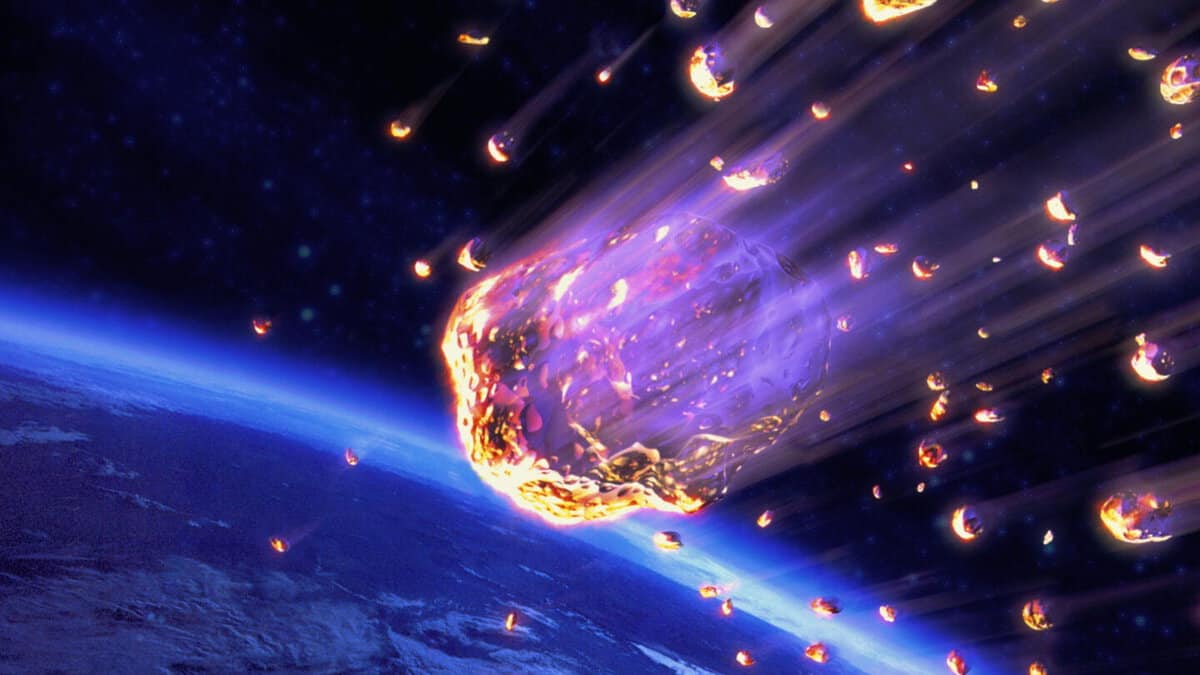There are prevailing theories that, while not entirely inaccurate, fail to fully explain the phenomenon. It is true that upon entering the Earth’s dense atmosphere, the outer layer of a meteorite heats up. Without proper thermal insulation, the meteorite would inevitably disintegrate. This explains why many meteor bodies do not reach the Earth’s surface. However, it is incorrect to attribute this phenomenon solely to friction with the air, as is often claimed in popular science literature. The true culprit is aerodynamic heating, but what exactly does that entail?
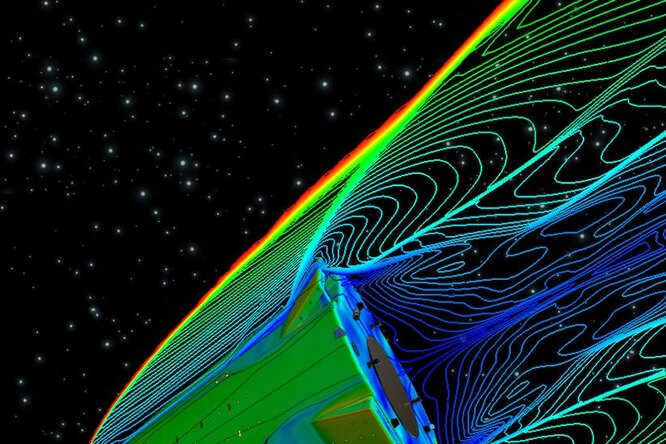
What causes meteorites to burn up in the Earth’s atmosphere?
When an object travels at supersonic speeds through a dense gas medium, it experiences aerodynamic heating, which is the main reason for the burning of meteorites in the atmosphere.
Meteor bodies enter the Earth’s atmosphere at speeds ranging from 11.2 to 72 km/s. A crucial process in their descent to the ground is ablation, which refers to the removal of surface material due to the flow of hot gas.
What Does Aerodynamic Heating Entail?
Naturally, there is friction with the air, which in turn generates heat and causes the descent vehicle’s surface to heat up. This phenomenon, known as aerodynamic heating, can result in the fiery and explosive descent of bolides.
It is common knowledge that when an object moves through a gas at supersonic speed, a shock wave is produced – a thin area where the density, pressure, and velocity of the gas rapidly increase. Naturally, as the gas pressure rises, it also heats up – the sudden increase in pressure causes a rapid rise in temperature. Another factor is the aerodynamic heating itself – the gas molecules near the surface of the moving object experience friction, leading to an increase in their chaotic motion and a subsequent rise in temperature. The hot gas then heats up the supersonic body, with heat being transferred through both conduction and radiation. However, at extremely high speeds, such as the 2nd cosmic speed, the radiation of gas molecules begins to have a significant impact. Therefore, the cause of heating is not solely due to friction in the atmosphere.
What impact does aerodynamic heating have on aircraft?
Aerodynamic heating is a challenge that is not only encountered by space vehicle designers, but also by those designing supersonic aircraft that operate within the Earth’s atmosphere.
It is a well-known fact that the creators of the world’s first supersonic passenger planes, the Concorde and the Tu-144, had to abandon their initial plan of achieving a speed of Mach 3 due to the issue of aerodynamic heating. Instead, they settled for a “modest” speed of 2.3. The high speeds would have caused the aircraft’s skin to heat up to temperatures that could potentially compromise the strength of the aluminum structure. Unfortunately, using titanium or special steel, as is done in military projects, was not economically feasible. For more information on how the designers of the renowned Soviet high-altitude interceptor MiG-25 solved the problem of aerodynamic heating, you can refer to the article titled “There is only MiG. MiG-25 Ghost Hunter.”
There is a distinct pattern and fuel consumption table in a restricted quantity and rate of ascent prior to entering orbit, the American individual captured on film with a camera that still used film for a full 15 meters without pausing for even a second. This demonstrates that according to the timetable, it had the potential to reach the northern latitudes of Canada at most.
There is a clear pattern and table of fuel usage in a limited amount and rate of ascent before entering orbit, the American individual recorded all 15 meters of film without any breaks. This indicates that based on the chart, it could have reached the northern latitudes of Canada.
To overcome gravity, all you need is a nut in your pocket that has a gravity equal to that of Earth, preferably regulated. Many forces are vying for such a discovery, but no one has yet managed to bring down a flying saucer. The Americans haven’t even ventured into space, so the idea that they were on the moon is absurd.
Even with this level of thickness, the rocket will remain firmly grounded. This is because it would weigh as much as Mount Everest.
Furthermore, if the metal surface of the rocket’s capsule had a thickness of only 1 meter, it would only last an hour when traveling at the speed of light.
It is impossible for us to reach or even come close to the speed of light. Additionally, there is no element on the periodic table that can withstand the effects of hydrogen molecules in a low-density space. Even if such an engine existed, the extreme acceleration would cause it to deteriorate rapidly. In just a minute, the engine would generate steam and the substance known as Lawrencium could be gathered in minuscule amounts, equivalent to a few molecules, on the tip of a sewing needle.
When we were learning about aerodynamics, we were taught about the intricacies of these phenomena! When the LA skin compacts, there are regions where the streamline air medium is adiabatically compressed! And the sharper the Mach angle, the greater the level of compression! Mathematically, Bernoulli’s equations describe this process in either integral or differential form! Specialists do not use the term “aerodynamic heating”! Instead, they refer to zones of adiabatic gas compression! That’s the idea!
If experts like our affftar are developing hypersonic missiles in the United States, it is evident why they are falling behind Russia in this regard.
The article provides a confusing description of the thermodynamic equilibrium processes involving the removal of heat under constant inertia forces and variable compression at supersonic speeds of a solid body in the presence of constant aerodynamic changes in the turbulent flow of rarefied gas media. It takes into account the jumps in the compaction of the media and subsequent phase transitions with excessive friction and heating. The comments on the article present different perspectives, some of which are correct and others incorrect. The most accurate analogy for these processes is the Diesel cycle, where fuel ignition occurs due to the compression of the media phases rather than the friction of the gas. It is fascinating to note that the proposed theory, which suggests that moving the shock wave further away from the body reduces the thermal load on the apparatus, aligns closely with the actual observations of meteorite falls. These observations indicate that the descent vehicle should have a super smooth drop shape with longitudinally extended and inwardly tapered spiral-diagonal twisting guides, similar to the design of the first “satellite”. It is possible that the frontal surface of the descent vehicle could be specially painted to facilitate excessive heating and increase the initial heating even further. However, this would also reduce the final temperature difference during aerodynamic heating, leading to a decrease in the turbulence layer and the speed of media and phase changes. In summary, it can be said that everything has already been invented in terms of vertical landing using downward jet engines, starting from the first “Sputnik” and ending with the last “Buran”. In this context, negative work is not involved for the falling body, as the work is primarily done by the thrusters compensating for inertia. Perhaps the only addition that could be made to these take-off and landing processes is the use of fancy meteorite shapes, allowing for partially reusable flights to become more practical and widespread.
The article provides a perplexing explanation of the thermodynamic equilibrium of heat dissipation under constant inertia forces and variable compression at supersonic speeds of a solid object in the midst of constant aerodynamic changes in the turbulent flow of rarefied gas medium. It takes into account variations in compaction, subsequent phase transitions with excessive friction and heating. Different perspectives are presented in the comments, where many are both right and wrong simultaneously. The most accurate analogy to these processes is the Diesel cycle, where fuel ignition occurs from the compression of media phases, rather than from gas friction. It is fascinating to note that the proposed theory, which suggests that moving the shock wave further away from the object reduces thermal load on the apparatus, aligns closely with real meteorite falls. These falls accurately indicate the necessary shape of a descent vehicle – a super smooth drop with longitudinally extended and inwardly tapered spiral-diagonal guides (similar to the first “satellite”). The frontal surface may be specially painted to enhance initial heating and reduce the final temperature difference during aerodynamic heating. This, in turn, leads to a faster decrease in the turbulence layer, as well as the speed of media and phase changes. In conclusion, everything has already been invented, starting from the first “Sputnik” to the last “Buran”. As for vertical landing through downward jet engine propulsion, negative work is not involved for the falling object, as the work is undertaken by thrusters compensating for inertia. Perhaps the only addition to such take-off and landing processes would be the inclusion of fancy meteorite shapes, allowing for partially reusable flights to become a practical reality.
The article provides a confusing explanation of the thermodynamic equilibrium of heat dissipation under constant inertia forces and variable compression at supersonic speeds of a solid object in the presence of continuous aerodynamic changes in the turbulent flow of rarefied gas media. This includes accounting for changes in its density and subsequent phase transitions with increased friction and heating…. Various perspectives are presented in the comments, where all are simultaneously correct and incorrect, and the most accurate representation of the processes is the Diesel cycle, where fuel ignition occurs due to compression of the media phases rather than gas friction…. What is particularly intriguing is that the proposed theory (which suggests that moving the shock wave further away from the object reduces the thermal load on the apparatus) and actual meteorite fall images accurately depict the required shape of the descent vehicle, specifically a super smooth drop with longitudinally extended and inwardly tapered spiral-diagonal guides (similar to the first “satellite”), possibly with a specially painted frontal surface to enhance initial heating but reduce the final temperature difference during aerodynamic heating. This means that the turbulence layer will decrease even faster, as well as the rate of change of media and their phases… Consequently, everything has already been invented, starting from the first “Sputnik” to the latest “Buran”, and regarding vertical landing via downward jet engines, there is no negative work exerted on the falling object as the work is not based on inertia forces but on the thrust of the engines compensating for inertia. Perhaps the only thing that can be added to these take-off and landing processes is a unique shape resembling meteorites, so that partially reusable flights can truly become commonplace…
“When gas molecules collide with a thin layer near the surface of a moving object, their random motion increases in energy and the temperature rises once more,” and is it possible to utilize alternative terminology?
Let’s begin by addressing the most basic misconception. As per the physics textbooks taught in schools, (approved by the members of the Russian Academy of Sciences, members of the Russian Academy of Engineering, and officials from the Ministries of Education and Higher Education and Science), work is defined as A = F*S*cos(Alpha), power is defined as N = A / t = F * V, and efficiency is defined as A_useful / E_expended. These textbooks also state that work can be positive or negative. Now, let’s consider three identical rockets. The first rocket ascends vertically at a speed of 100 m/sec, the second rocket remains suspended in the atmosphere, seemingly “standing on a column of flame,” and the third rocket descends uniformly at a speed of 1 m/sec (similar to the first stage of Elon Musk’s rockets). Let’s attempt to calculate the power and efficiency of each of these rockets, assuming that the jet engines of all three rockets generate the same thrust. This analysis leads to an intriguing paradox – the power of the second rocket is 0, and consequently, its efficiency is also 0. Moreover, the power and efficiency of the third rocket turn out to be negative, which is impossible. So, could it be that there are flaws in the physics textbooks used in schools that lead to such outcomes? Curiously, neither the officials nor the academicians seem to acknowledge them. Would you be interested in discussing this further?
Let’s begin with the most basic misunderstanding. According to the physics textbooks taught in schools, (which have been approved by members of the Russian Academy of Sciences and officials from the Ministries of Education, Higher Education, and Science), work is defined as A = F*S*cos(Alpha), power is defined as N = A / t = F * V, and efficiency is defined as A_useful / E_expended. These textbooks also state that work can be positive or negative. Now, let’s consider three identical rockets. The first rocket moves upwards at a speed of 100 m/sec, the second rocket remains stationary in the atmosphere, appearing to be “suspended on a column of flame,” and the third rocket descends uniformly at a speed of 1 m/sec (similar to the first stage of Elon Musk’s rockets). We will attempt to calculate the power and efficiency of each of these rockets, assuming that all three rockets generate the same thrust. This analysis leads to an intriguing paradox – the power of the second rocket is 0, and consequently, its efficiency is also 0. Furthermore, the power and efficiency of the third rocket are negative, which seems impossible. Could it be that there are inaccuracies in the school physics textbooks that result in such outcomes? Curiously, neither officials nor members of the Russian Academy of Sciences address these issues. Would you be interested in discussing this matter further?
During our post-lunch conversation with young individuals today, the topic of discussion was “space,” and I stumbled upon a fascinating fact.
– What causes a meteorite to burn up as it descends to the Earth?
– The meteorite heats up as it experiences friction with the air while passing through the dense layers of the atmosphere.
To my surprise, everyone present agreed with this answer, Carl!
I further inquired from various individuals and reached the conclusion that the Unified State Exam (USE) must be immediately abolished! The USE is detrimental! We are raising a generation that lacks fundamental knowledge! Furthermore, some individuals are incapable of comprehending anything following such training. Here are more details (“TUT” is not yet prepared 🙁) It’s an outcry from the depths of my soul, so to speak.
Now, let’s revisit our initial question.
Behold, behold! A truly magnificent image is presented before your very eyes, yet, alas, it must be admitted that it fails to accurately portray the truth. What you see here is the tail of a meteorite, basking in the warmth of the celestial heavens. (An image sourced from the vast expanse of the Internet)
This exquisite artwork is indeed a sight to behold, but it veers slightly off course when it comes to representing reality. This depiction showcases the meteorite’s tail luxuriating in a state of cozy warmth. (A drawing sourced from the boundless realm of the Internet)
Ah, such notions are frequently espoused in countless tomes, echoed on the television waves, and taught within the confines of educational institutions. Curse that establishment!
In truth, the reality is quite different:
It is the front of the object that experiences the initial onslaught of heat. Subsequently, the fiery breath of hot air envelops the entirety of the object, bestowing upon it a complete warmth.
And the front part of the object gets heated not due to friction, but due to the compression of air in front of it. When the object enters the atmosphere at a high speed, there is a significant compression of air in front of it, resulting in heating and eventually transitioning into a plasma state. Friction does not play a significant role in this case.
The phenomenon of air heating during compression has been well-known for a long time. Its regularity was initially established by the French scientist B. P. E. Clapeyron in 1834. In 1874, D. I. Mendeleev utilized this knowledge to derive the equation of state for one mole of an ideal gas.
The Mendeleev-Clapeyron equation is pV = RT.
Here, R represents the universal gas constant and V denotes volume – both of which remain constant.
According to the equation, the temperature increases as the pressure increases.
Take diesel engines as an illustration, where this phenomenon has been employed for generations to initiate fuel combustion.

SpaceX: space tourists feel fantastic.
The cat is out of the bag: what is the reason behind meteorites burning up when they pass through the atmosphere, while skydivers manage to survive?

Presumably, anyone with a passion for astronomy and outer space has likely pondered the question of why satellites and other objects are destroyed in the atmosphere when descending from orbit, while parachutists are not. This curiosity may have been piqued further after Felix Baumgartner’s record-breaking jump, which ended with a successful landing. Similar examples include the V-2 rockets from Germany, which reached the space frontier but fell without experiencing global structural collapse.
At first glance, one might assume that at altitudes above thirty-nine kilometers, the air becomes extremely thin, resulting in reduced drag. However, there is undeniable evidence that contradicts this assumption. So, let’s explore this question together and search for the answer.
What is the connection between Baumgartner’s jump and the V-2 rocket?
In the 1940s, both Baumgartner’s jump and the V-2 rocket demonstrated impressive feats in the realm of space exploration. While Baumgartner’s jump involved a vertical descent, the V-2 rocket was capable of reaching the frontier of space with its vertical launch. These rockets could reach speeds of up to 9,000 kilometers per hour. However, once their fuel was depleted, the V-2 rockets would come to a complete stop. Unlike Baumgartner’s jump, the rockets were not designed to safely land but instead would fall to the ground. If they happened to land on a gas station or other fuel storage facility, the consequences could have been catastrophic.
The renowned parachutist’s leap had essentially the same significance as the German rockets. Felix Baumgartner ascended vertically above the surface of the Earth, and executed a downward jump. In other words, at the instant right before the leap and the descent of the rocket, their velocity with respect to the Earth was zero. Hence, we can deduce that if any object descends from a substantial altitude (exceeding 30 km), the velocity parameters attained will still be inadequate for complete annihilation during the process of friction with the atmospheric layers. However, provided certain conditions are met – the initial velocity should not surpass 0 in relation to the Earth’s surface.
Here’s a fascinating tidbit for you: the parachutist reached a staggering speed of 1357.6 kilometers per hour during their descent. To put that into perspective, a typical passenger plane cruises at a speed of 900-1000 kilometers per hour, while supersonic aircraft like the Concorde or Tu-144 can reach speeds twice as fast as Baumgartner’s record-breaking fall.
What causes the burning of satellites and meteorites?
The process is quite straightforward: it is important to understand that objects in space, including satellites and meteorites, move very quickly in relation to the Earth. In fact, their speeds are at least ten times faster than that of a skydiver. For instance, the International Space Station (ISS) travels at a speed of 7.6 kilometers per second. Meteorites, on the other hand, can enter the atmosphere at various speeds, but they are always faster than any satellite in orbit.
Due to their incredible velocities, these objects encounter dense layers of the atmosphere at an incredibly fast pace, resulting in intense friction with the air molecules. As a result, the immense kinetic energy possessed by these objects is instantaneously converted into thermal energy, causing them to ignite and burn up.
Imagine a scenario in which a satellite has the ability to autonomously decrease its velocity to just 10% of its initial speed, even if it means consuming a significant amount of fuel. In such a scenario, the satellite would have a high probability of safely reaching the surface of the Earth. However, implementing such a project would require enormous financial resources, making it currently impractical for mankind.

When a celestial body descends from a significant altitude (for instance, from a height of 100 kilometers) – the velocity it attains is insufficient to be incinerated due to friction with the Earth’s atmosphere, assuming that the object’s initial velocity relative to the Earth is zero.
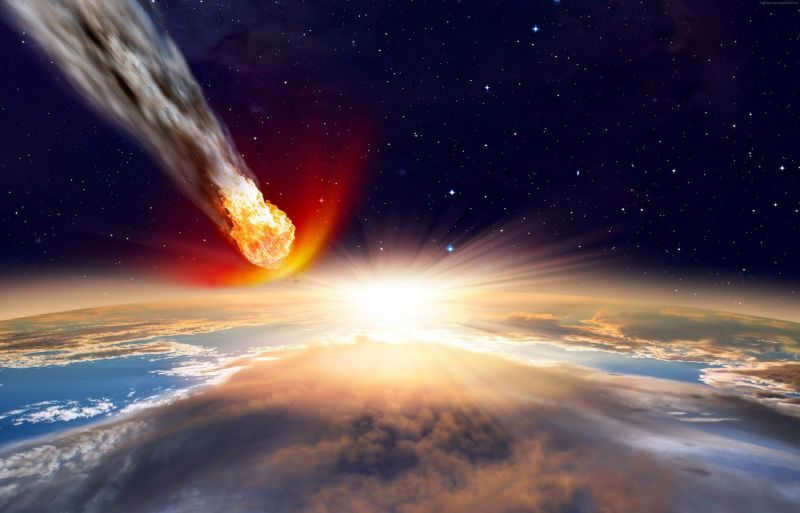
Regarding meteorites, their entry speed into the atmosphere can vary greatly – it depends on the combined velocities of the Earth and the meteorite at the moment of entry. For the majority of meteorites, this velocity exceeds the orbital speeds of spacecraft and even skydivers.
When meteorites or falling satellites enter the dense layers of the atmosphere at high speeds, they experience intense friction with the air. This friction converts their enormous kinetic energy into thermal energy, resulting in combustion in the atmosphere.
As a result of the resistance encountered in the atmosphere, the meteoroid becomes hot and starts emitting light. These objects leave visible marks as they travel through the Earth’s atmosphere. It is common for people to mistakenly use the terms meteorite and meteor interchangeably.
A meteor refers to an object that burns up in the atmosphere and never reaches the Earth’s surface (the term meteor can also refer to the phenomenon of light itself). On the other hand, a meteorite is the term used for the remains of a meteoroid that has landed on Earth.
This is the fascinating physics behind the whole process!

The dimensions of the parachute that maximize its effectiveness in air resistance were initially identified by Leonardo da Vinci.
By Elena Tikhomirova
The tournament “Touch Science.”
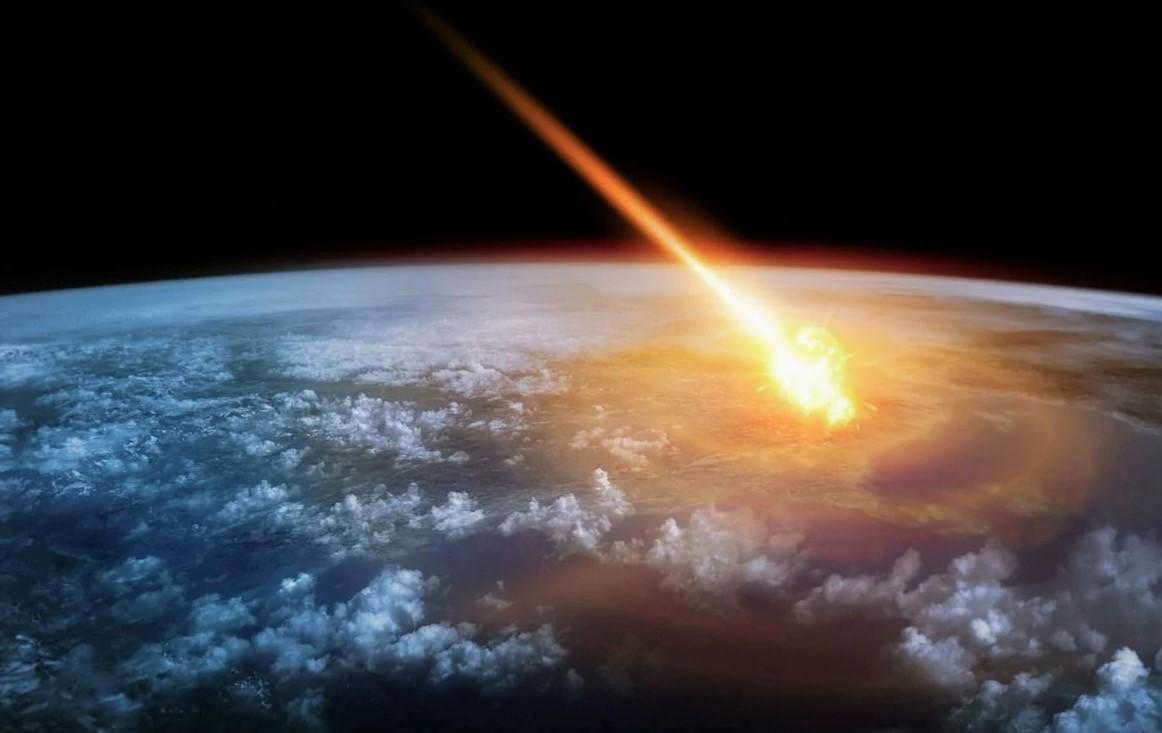
Meteorites occasionally crash onto the Earth’s surface. Most of these celestial bodies burn up in the atmosphere, but a few are able to make it through and capture a significant amount of attention. Astronomers are constantly monitoring all objects approaching Earth and gathering data about them.
What is a meteorite
A meteorite is a celestial object that survives its journey through a planet’s atmosphere and lands on the surface. Our planet is constantly moving, and as it does, it occasionally intersects the paths of small, solid objects, causing them to descend and strike the Earth. While these space solids are traveling through our atmosphere, they are known as meteors, but once a portion of them reaches the surface, they are classified as meteorites.
Meteorites are solid objects that have a radius of only a few meters and vary in size from asteroids. Throughout the entire history of the Earth, a vast quantity of these objects have impacted its surface. During the initial billion years of the planet’s creation, meteorite impacts were particularly frequent. In contemporary times, the influx of celestial bodies has significantly diminished, primarily appearing in the form of dust particles that rapidly disintegrate in the atmosphere.
Outward indications
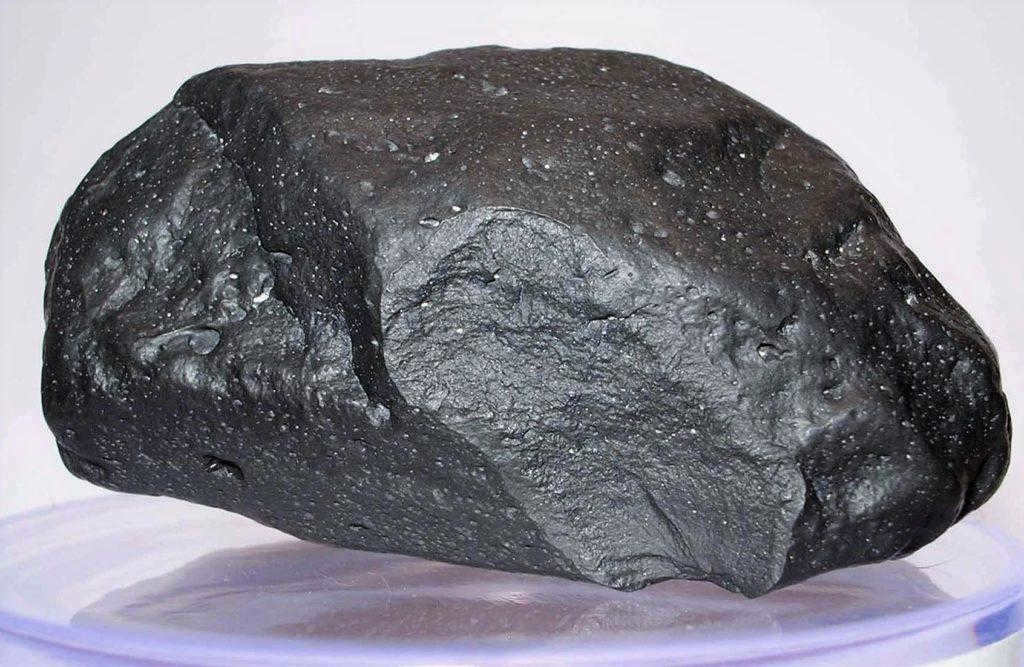
Meteorite featuring a distinct fusion crust
Among the primary external indications of a meteorite, it is worth noting:
In addition, these extraterrestrial objects possess an irregular shape. Encountering a rounded or cone-shaped meteorite is quite challenging. The surface comprises a molten and recently solidified layer of the meteorite’s material. This process occurs during its traverse through the atmosphere, where it reaches a temperature of approximately 1800 degrees.
The indentations that characterize the surface of a meteorite are referred to as regmaglypts. They arise as a result of ablation processes during the body’s passage through the atmosphere. All meteorites possess magnetic properties.
What occurs when meteorites descend to our planet
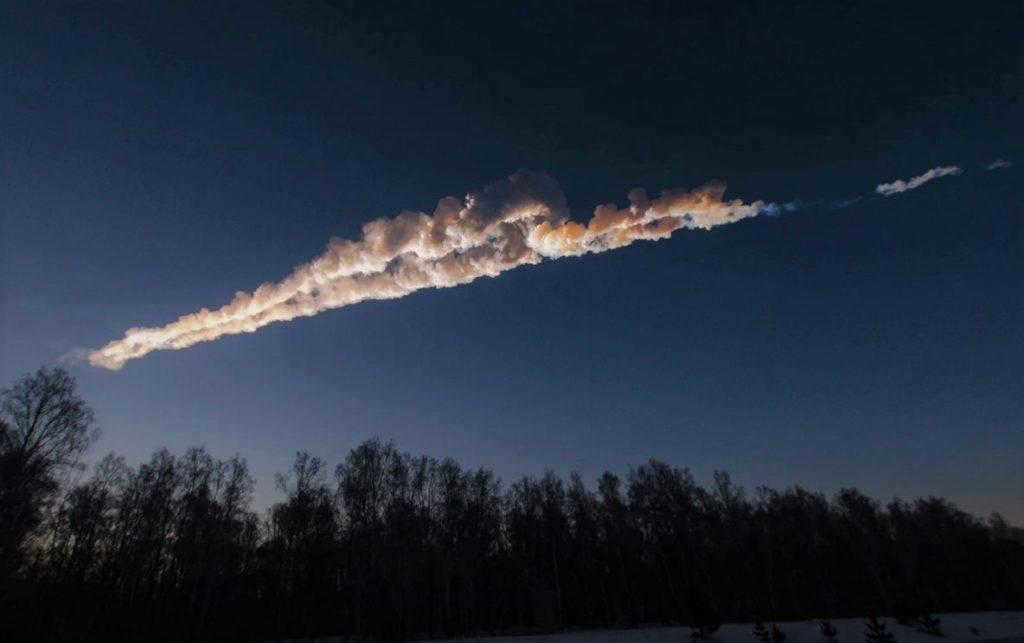
Traces left by a meteorite’s descent in Chelyabinsk
Most celestial objects have a high velocity of movement (reaching 72 km/s when entering the atmosphere). The friction with the air causes the meteorite to ignite and glow. Typically, these solid objects burn up completely before reaching the Earth’s surface. If the meteorite is large, its movement gradually slows down and cools off. The subsequent outcome depends on the initial velocity, mass, and angle of entry into the atmosphere.
Fun fact: On other planets, one can observe distinct traces of meteorite falls of various sizes.
Meteorites have various designations and classifications, including:
Objects in space are referred to as meteoric bodies until they enter the Earth’s atmosphere. They are categorized based on different astronomical characteristics. One can differentiate a meteorite from an asteroid, space dust, and other celestial objects. If an object rapidly traverses the atmosphere, leaving a luminous trail in its wake, it is known as a meteor or bolide. A solid entity that impacts the Earth’s surface, creating a deep crater, is called a meteorite. These bodies are assigned names depending on the location of their impact.

There are different categories of stone meteorites, including chondrites and achondrites. Chondrites get their name from the chondrules they contain, which are silicate formations. On the other hand, achondrites resemble terrestrial igneous rocks. These meteorites lack chondrules and are made up of material that formed after planetary bodies melted. Furthermore, meteorites can be classified as either fallen or found. Stone varieties of these objects can easily go unnoticed because they resemble rocks found on Earth.
What are they composed of
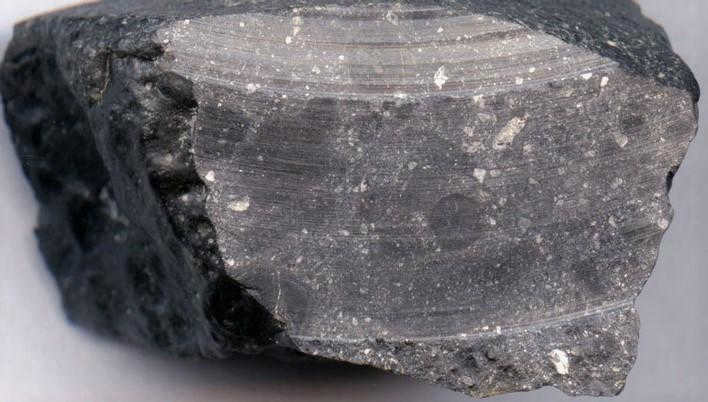

The appearance of a meteorite after collecting samples for further analysis
The majority of meteorites belong to the stone classification. In most instances, they are known as chondrites (making up 92.8% of all collisions with the Earth’s surface). Achondrites account for 7.3% of all falls, while iron meteorites make up 5.7% and iron-silicate meteorites comprise 1.5%. These mentioned types of meteorites are classified as differentiated. This signifies that the material that makes up these celestial bodies was acquired through collisions with asteroids and other planetary objects.
Did you know that not too long ago, it was believed that meteorites were formed from the explosion of a large celestial body? This theory was based on the hypothetical planet Phaeton. However, further analysis has revealed that meteorites actually originate from various parts of asteroids.
Different Types of Meteorites
When most people think of meteorites, they envision solid objects made of iron. While it is true that there are iron meteorites, there are actually three different types of meteorites:
The iron breed
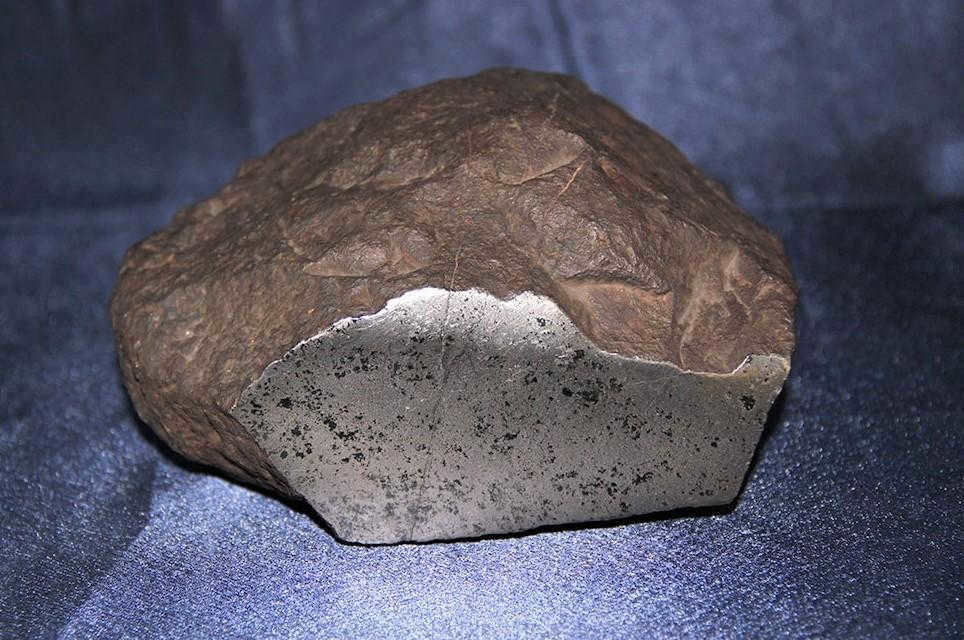
Iron meteorites were previously components of either a planet’s core or a large asteroid. It is thought that the latter contributed to the formation of the Asteroid Belt, which is situated between Jupiter and Mars. On our planet, these substances are among the densest and exhibit a strong attraction to magnets. In fact, iron meteorites are significantly heavier than ordinary rocks. Their weight can be likened to that of a cannonball or a steel plate.
Most of these meteorites contain about 95% iron, with the remaining 5% consisting of nickel and other trace elements. These celestial bodies are classified based on their structure and chemical composition. Determining the classification involves analyzing the main components of the alloy – kamasite and tenite. These components have a fascinating and intricate lattice structure, which can be clearly observed when they are exposed to a solution of nitric acid.
Form of Stone
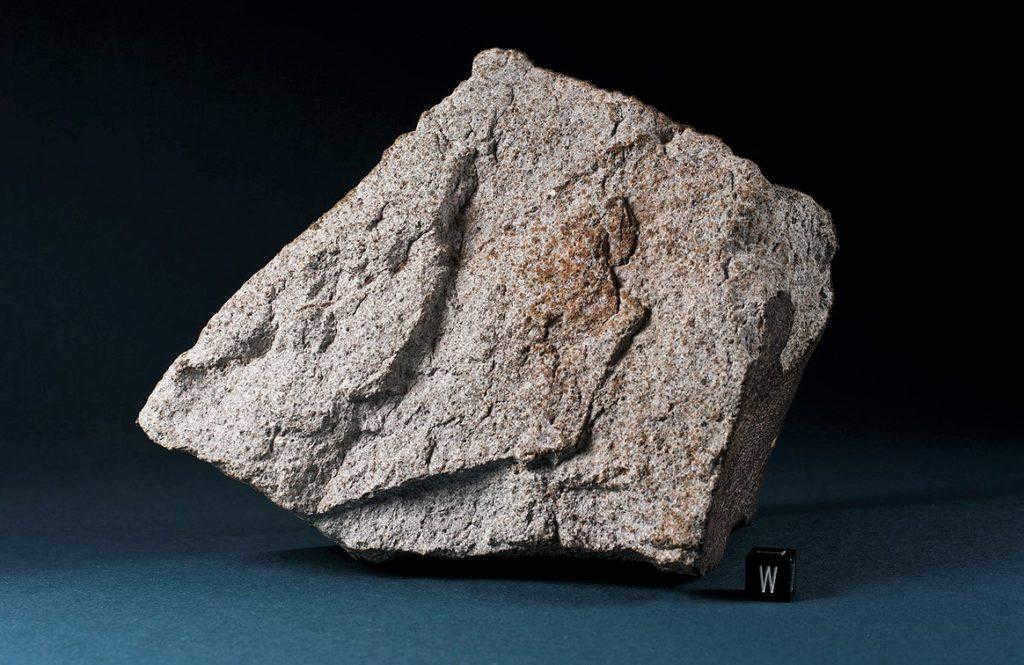
Astronomical bodies known as stone meteorites make up one of the largest categories of meteorites. They originate from either an asteroid or the outer crust of a planet. Many stone meteorites go unrecognized on Earth due to their striking similarity to familiar terrestrial rocks. Only those with expertise can differentiate between Earth materials and meteorites. These celestial objects stand out with their black color, a result of the combustion they undergo during their journey through the atmosphere.
Stone-iron variation
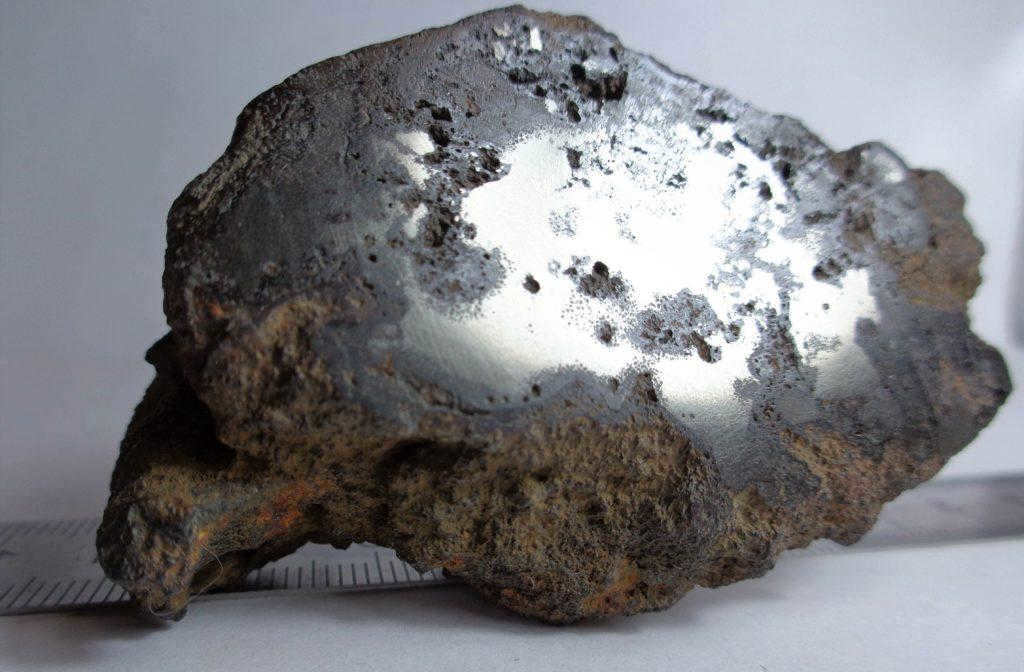
The stone-iron type of meteorites is extremely rare, accounting for only 2% of all celestial bodies. These meteorites are composed of an equal mixture of rock and iron and are further classified into mesosiderites and pallasites. Stone-iron meteorites are believed to have formed at the boundary between the mantle and crust of their parent bodies.
Among collectors, pallasites are highly sought after. These meteorites contain a matrix of iron and nickel, with pockets of olivine filling the gaps. If the olivine crystals are pure and have a green color, they are considered gem-quality peridots. Mesosiderites, on the other hand, make up the smallest group of stone-iron meteorites. Despite their smaller size, these meteorites are visually appealing and consist of a combination of nickel and silicates.
What sets a meteorite apart from a meteor, bolide, comet, and asteroid?
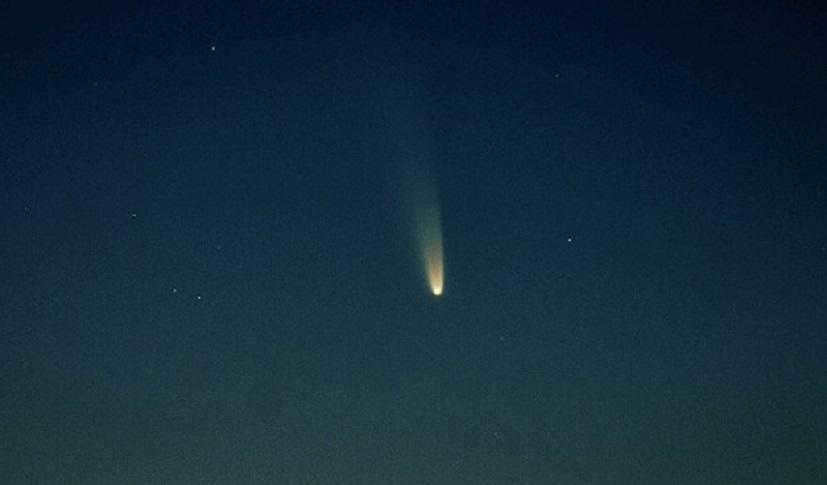
Photo of comet NEOWISE
It is not uncommon for a meteorite to be mistakenly identified as a bolide, meteor, or asteroid. In order to understand the classification of celestial bodies, it is necessary to examine their characteristics.
- Meteorites are celestial objects that have successfully penetrated the Earth’s atmosphere and landed on its surface.
- Meteors are small fragments of space objects, usually no larger than a few centimeters. These particles enter the atmosphere at high speeds and burn brightly, resembling shooting stars.
- A bolide is a particularly bright meteor. It leaves a trail of smoke behind it. The passage of a space object is often accompanied by a loud noise and ends with an explosion.
- Asteroids are rocky celestial objects that are not active. The majority of them have orbits that are located between Mars and Jupiter, while some are found in the outer belt beyond the orbit of Pluto.
Origin of meteorites
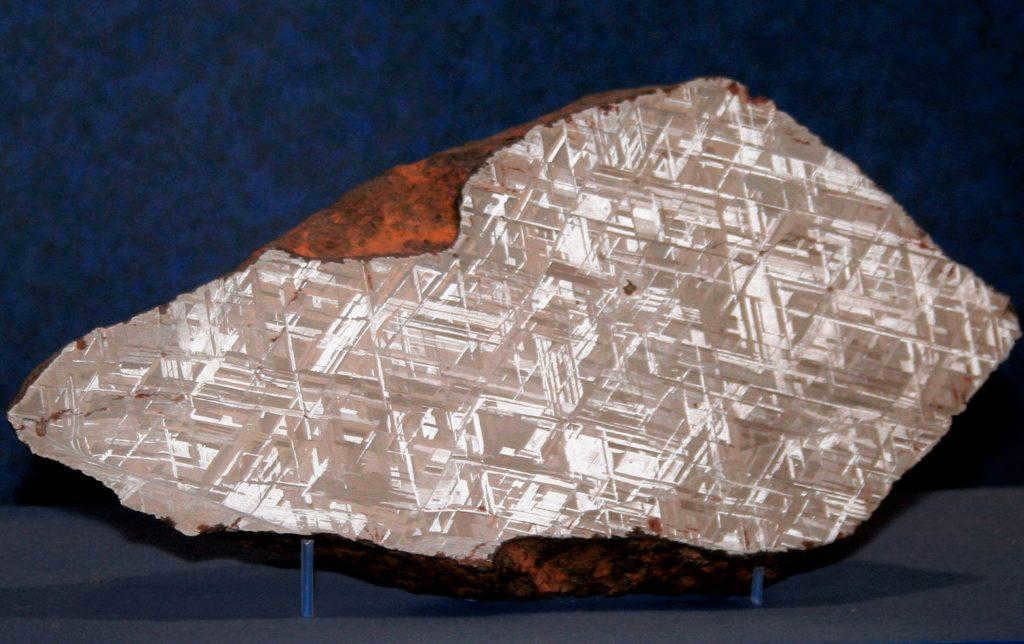
Widmannstatten figures found in the cross-section of a meteorite
Upon analyzing the chemical and other properties of meteorites, scientists have determined that they are fragments from large celestial bodies within our solar system. These parent bodies have a radius of approximately 200 km, similar in size to the largest asteroids. The findings of the study are based on the cooling process of iron meteorites, which result in the formation of various alloys containing nickel and exhibiting widmanstetten patterns.
These findings suggest that the stone meteorites originated from small planets that lack an atmosphere and are covered in craters, much like the Moon. However, it is important to note that meteorites and samples collected from the Moon differ significantly in terms of their chemical composition. Therefore, it can be concluded that meteorites did not originate directly from the Moon.
Did you know that scientists have determined that meteorites come from the asteroid belt based on their analysis of photos of meteorite flights?
Shooting Stars
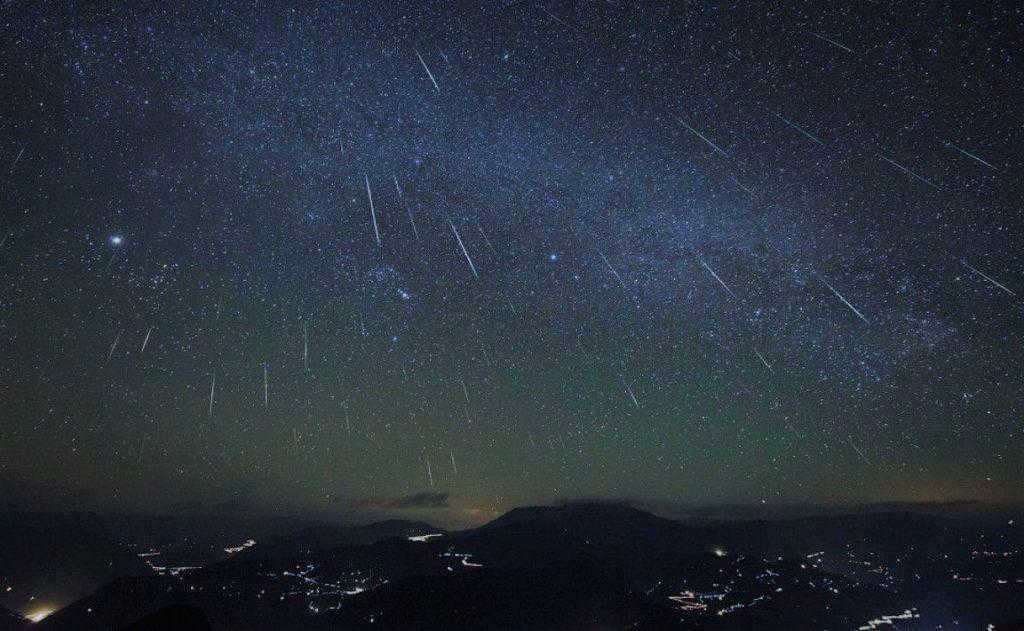
Picture depicting a meteor shower
When a meteorite enters the Earth’s atmosphere, it starts to break apart. Numerous fragments descend upon the planet, resulting in the formation of craters. This occurrence is frequently referred to as a meteor shower, which is sometimes mistaken for a meteor shower. The distinction lies in the fact that meteors never make contact with the Earth’s surface, whereas meteorite fragments have the potential to cause significant damage.
Meteorites that contain carbon often have a thin glass-like crust that forms when they experience high temperatures during their descent. This protective coating helps preserve the composition of the meteorite and shield it from the external environment. Extensive research into the chemical structure of meteorites has revealed that they contain elements similar to those found on Earth, such as carboxylic acid, hydrocarbons, and nitrogen compounds. However, it cannot be definitively stated that these findings confirm the presence of extraterrestrial life.
Why was the Chelyabinsk meteorite not tracked? Will there be future meteorite falls? And how great is the threat of meteorites? Astronomers provide insight.
The Chelyabinsk meteorite, why it was not detected, whether we can expect future meteorite falls, and how great is the threat of meteorites? Astronomers provide us with answers.
The Chelyabinsk meteorite, why it was not tracked, whether we should anticipate new falls, and the extent of the meteorite threat. Astronomers provide us with information.
All you need to know about meteorites
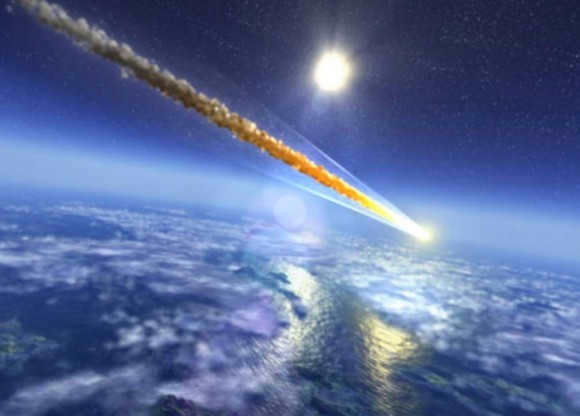
Alexander Bagrov, a leading researcher at the Space Astrometry Department of the Institute of Astronomy of the Russian Academy of Sciences (INASAN), holds a Doctorate in Physical and Mathematical Sciences.
About meteorites
– In order to investigate the origins of meteorites, it is essential to delve into the formation of the solar system. Based on my findings, it appears that the solar system came into existence approximately 5 billion years ago. Interestingly, the planets actually formed before the Sun. This concept resonates deeply with me, as it echoes the idea presented in the Shestodnev, where the Earth was created first, already adorned with lush greenery, and the Sun only emerged on the third day of biblical creation.
Fragments from the Asteroid Belt have the ability to enter the Earth’s atmosphere. In the event that these fragments do not completely disintegrate upon entering the atmosphere, they will descend to the ground and be referred to as meteorites.
What occurred in the sky above Chelyabinsk?
A bolide phenomenon took place over Chelyabinsk, during which a single meteorite passed over the city. It is important to note that this event should not be mistaken for a meteor shower, as some journalists have inaccurately claimed. A meteor shower refers to the occurrence of numerous meteorites falling from the sky. As the saying goes, “One snowflake does not make a snowfall, and one raindrop does not make a rainstorm.” In the same vein, one meteorite does not constitute a meteor shower.
A meteorite is an object that has been discovered on Earth, whereas cosmic bodies are constantly in motion throughout space. Larger bodies are referred to as asteroids, while smaller bodies are known as meteoroids. If a cosmic body burns up upon entering the Earth’s atmosphere, it is referred to as a meteor, and any resulting substance found on the ground is called a meteorite.
In the vast expanse of space, every celestial body gracefully orbits in its designated path, with the potential to continue its journey for billions of years, as long as it avoids any collisions. However, space is not an empty void, and these bodies often encounter various elements within the solar system, including photons emitted by the Sun. Each collision, no matter how minuscule, causes a slight alteration in the body’s orbit. If this alteration leads the body to intersect with a planet’s path, a catastrophic collision occurs. If the planet happens to be our very own Earth, we are fortunate enough to witness the mesmerizing spectacle of stargazing, shooting stars, meteors, or meteorites. On a daily basis, dozens of meteors gracefully soar above our heads, while millions traverse the entire planet. Given the Earth’s age, which spans billions of years, one can only imagine the countless objects that have entered our atmosphere and disintegrated into oblivion. However, if a celestial body possesses substantial mass, it may not completely burn up and manages to reach the Earth’s surface. A remarkable example of this occurred in 1947 when the Sikhote-Alin meteorite descended from the heavens. This extraordinary space rock weighed an astonishing 70 tons, with 27 tons ultimately discovered on the ground.
What makes it difficult to track a meteorite?
Let me provide you with an analogy – when we cross the street, we carefully look left and right for potential hazards, such as cars. We don’t pay attention to the small bugs crawling on the ground. Similarly, we don’t anticipate the presence of small celestial bodies because they are not considered dangerous. The focus of our attention is on larger bodies that exceed 140 meters in diameter. The global community is actively contemplating how to effectively establish a system to monitor these larger objects. However, the meteorite that impacted Chelyabinsk was only a few meters in diameter. Just like it’s impossible to spot a tiny bug from a distance of 10 kilometers, this meteorite was moving at incredible speed, making it extremely challenging to track and ultimately futile to do so.
There is currently no monitoring system in Russia or anywhere else in the world to track asteroids. While the largest asteroids are monitored, they tend to be located far from Earth, typically in the Asteroid Belt area. Occasionally, smaller asteroids do come closer to our planet. The discovery of a smaller asteroid approaching Earth can be just as exciting as the current event surrounding asteroid 2012 DA14.
Has any harm been caused to humans by meteorites?
In one known incident, believed to have occurred in the 14th century, a Chinese man was killed by a meteorite. Apart from this case, there is no recorded evidence of any other human fatalities caused by meteorites. However, meteorites have been known to cause damage in some instances. For example, a few years ago, an American woman had a meteorite crash through the roof of her house. Remarkably, she received a higher sum of money for the meteorite than the entire value of her house.
The level of destruction would have been immense. The explosion’s force is approximated to be equivalent to 50 megatons of TNT, resulting in the toppling of trees across thousands of square kilometers in the taiga. If this explosion had taken place over St. Petersburg, the city would have been virtually obliterated.
Are we anticipating any new meteorites?
– Anticipation is necessary, given the abundance of objects traversing through space. A comprehensive system for monitoring them has yet to be established. The potential threat they present is significant enough to warrant our attention. Currently, there is a discussion surrounding the implementation of a tracking system, as well as the development of countermeasures. Should such a hazardous object approach Earth, it would be imperative to eliminate it.
Is Russia developing a system to counteract meteorites?
There are ongoing efforts in Russia to develop such a system, although currently it is mostly limited to theoretical discussions and proposals. The main obstacle in implementing such a system is the lack of funding, as the resources in Russia tend to be directed towards the oligarchs.
Yuri Pidoprygora, an astronomer with a PhD in physics and astronomy, who works as a researcher at the Radio Astronomy Observatory in the village of Dwingeloo in the north of the Netherlands, shared his insights on the matter.
From an astronomical standpoint, the occurrence of celestial bodies, such as meteoroids or microasteroids, falling to Earth of this particular scale (which is estimated to be no more than a couple of meters) is not particularly uncommon. On average, such events happen once every few months, or perhaps once a year.
NASA has estimated the size of the Chelyabinsk microasteroid to be 15 meters, which if accurate, would make this event even more remarkable than previously thought. It may be the most intriguing incident since the well-known explosion over Tunguska.
The only notable aspect of this event is that the asteroid’s trajectory passed over densely populated areas. Additionally, there was a peculiar coincidence in timing with the “close” (~30,000 km) flyby of asteroid DA14, which has garnered significant media attention in recent days. This has led to numerous “misunderstandings” in the media coverage, raising questions about whether they were accidental or intentional.
Monitoring of potentially hazardous large asteroids in close proximity is currently insufficient, let alone the monitoring of smaller debris. Additionally, the orbits near Earth are congested with space debris, which is largely disregarded. Therefore, it is fortunate if only a rock were to fall on one’s head, rather than a barrel containing a ton of highly toxic rocket fuel or a spent nuclear reactor.
As my colleague mentioned, we must decide between effective control of asteroid threats or providing the latest model of the iPhone for everyone (as humanity’s “best part” has already made this choice). Speaking of asteroids, the monitoring of a much more severe and tangible danger, such as tsunamis, even garners attention – although recent horrifying examples are close at hand.
Maybe it should be noted that when dealing with sizes like these, we are only referring to a temporary interaction with the upper atmosphere and as a result of this, only a small portion of the debris could potentially make it to the surface. A direct collision with a 15-meter asteroid would be significantly different, to say the least.
Have you perused the article Meteorite? You may find it interesting:
The extraordinary Green Comet was last observed by Neanderthals. This occurred 50 thousand years ago – during the ancient Stone Age, also referred to as the Middle Paleolithic. This time, the comet will pass by Earth at its closest point on February 1 and 2. During these days, it will traverse our planet at a distance of two and a half light minutes – a mere 42 million kilometers away.
Learn more about the green comet and its observable locations in the piece REN TV.
What is a comet
A comet is a celestial object that revolves around the Sun with a specific period. When it approaches the Sun, it forms a bright tail made up of gas and dust, which is its distinguishing feature.
What sets comets apart from asteroids is their composition and size. Asteroids are made up of solid materials such as metals and silicates, while comets are mainly composed of gases with a small amount of dust.
Asteroids can reach sizes of hundreds of kilometers, whereas comets typically do not exceed a few tens of kilometers in size. Additionally, asteroids do not have tails like comets do.

Comets: essential information about these celestial bodies
Understanding the composition of comets
While the trajectory of a comet cannot be visually discerned as it traverses the vastness of space, its position becomes apparent as it nears the Sun. As the comet approaches, it starts to unravel a peculiar tail, revealing its true nature in all its splendor. Comets consist of three primary components.
The central part of the comet
The core is a compact entity or a combination of entities with a size of several kilometers. The majority of the comet’s weight is concentrated within its core. As per the hypothesis proposed by American astronomer Fred Whipple, the comet’s core is composed of a blend of different types of ice, primarily water ice with traces of frozen carbon dioxide, ammonia, and dust. This hypothesis is commonly referred to as the “dirty snowball” concept.
Comet’s Coma Phenomenon
When a comet gets closer to the Sun, its core starts to heat up, causing the ices to sublimate, meaning they vaporize without going through a liquid phase. This process results in the release of gas and dust particles that create a spherical cloud around the nucleus, known as a coma.
The coma, made up of gas and dust, typically expands from 100,000 to 1.4 million kilometers away from the nucleus and takes on a globular shape. The pressure exerted by sunlight can alter the shape of the coma, causing it to be pulled in the opposite direction of the Sun.
Together, the coma and nucleus make up the head of the comet. The coma itself can be divided into three components: the inner, visible, and ultraviolet components.
The Tail of the Comet
The tail of a comet is a glowing streak that is formed by the solar wind and travels in the opposite direction of the Sun. The tail, along with the coma, is responsible for 99.9% of the brightness, but only makes up a tiny fraction of the comet’s overall mass.
Comet tails don’t have well-defined edges and are actually see-through because they contain extremely sparse gases and minuscule dust particles. These dust particles have a similar composition to asteroids. The gas glows because it is ionized by ultraviolet light, while the dust scatters light.
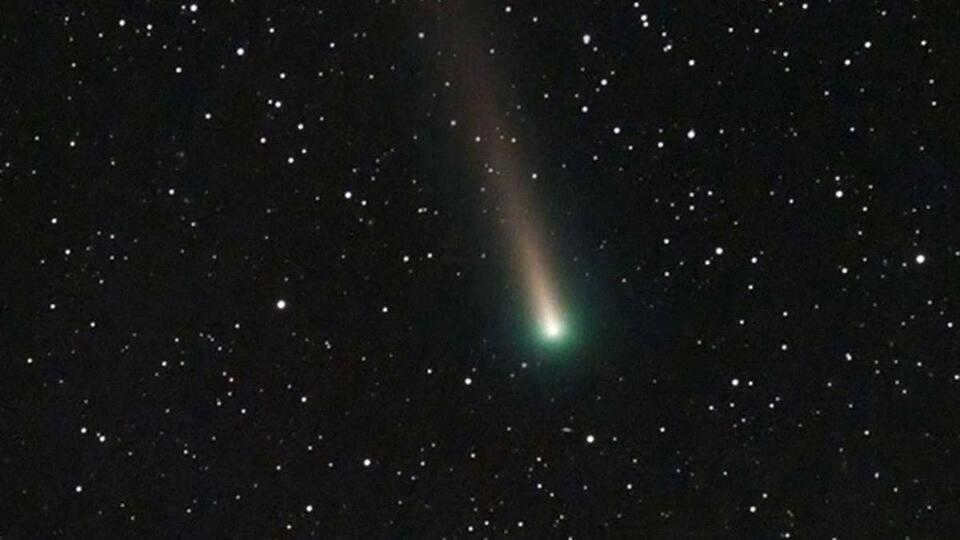
A comet with a greenish glow
The discovery of the green comet
In March 2, 2022, two astronomers, Frank Muskie and Bryce Bolin, were using the Zwicky Transient Facility (ZTF) in Southern California to observe the night sky. While conducting their survey, the scientists stumbled upon an object that initially appeared to be an asteroid, as it did not exhibit the typical characteristics of comets.
The object was extremely faint, nearly 25,000 times dimmer than the stars that are visible to the naked eye. Upon further investigation, it was revealed that the object had a dense and condensed coma, which is a halo of gas and dust. This led the scientists to the realization that they had actually discovered a comet.
The celestial body was given the name “green” due to the greenish-yellow tint of its head and tail. This unique color is a result of the presence of two-atom carbon.
What is the reason behind naming the green comet as C/2022 E3 (ZTF)?
The complete designation of the celestial object heading towards Earth contains important information about it: C stands for long-periodic comet (with a revolution period around the Sun of 50 thousand years), the symbols 2022 E3 indicate the date of its discovery and the fact that this is the third finding of its kind during this period; the three-letter abbreviation ZTF signifies that the comet was observed using the Zwicky Transient Facility’s optics.
Appearance of the emerald comet
The emerald comet measures approximately one kilometer across. Researchers hypothesize that the comet originated from the Oort Cloud, an imaginary spherical zone within the solar system that serves as the origin for comets with long orbital periods.
Experts speculate that this encounter will mark the final occasion on which this celestial object will come near our planet. Subsequently, it will be expelled beyond the boundaries of the solar system.
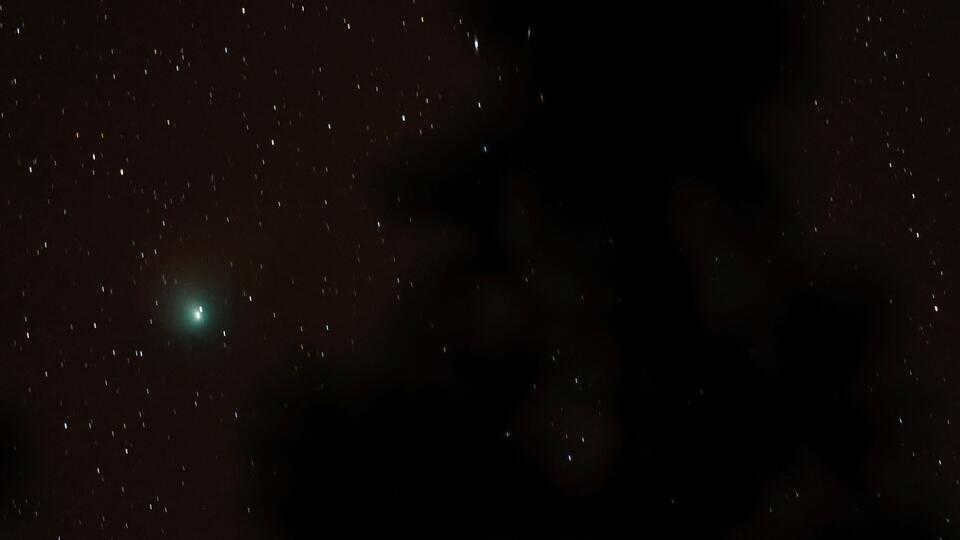
Can a green comet be harmful?
Researchers have discovered that this extraterrestrial object came within 166 million kilometers of the Sun before looping back and heading towards Earth. Fortunately, the comet’s approach does not pose any threats or dangers to our planet.
Scientists claim that the phenomenon of an uncommon celestial object has the potential to be the most impressive event of 2023. The optimal conditions for observation will occur at the end of January and early February, when the comet will be at its closest point to Earth.
The path of its trajectory passes through the region between the handle of the Big Dipper and Polaris. Astronomers predict that the length of the comet’s gas tail will be comparable to the size of the “handle” of the Big Dipper.
Following sunset on the night of January 31st to February 1st, the comet will be visible near Polaris, close to the northern celestial pole in the constellation Giraffe. According to experts, at 20:54 Moscow time on February 1st, Russians will have the opportunity to see the comet with the naked eye – provided there are no city lights and the weather is suitable.
Between February 1 and February 2, 2023, an astronomical object will be situated approximately 42 million kilometers away from the Earth. This period will mark the comet’s longest tail. As the days go by, the brightness of the comet will gradually diminish, so it is recommended to utilize optical devices for a more detailed examination.
The residents of Moscow will have the opportunity to witness the approach of the green comet C/2022 E3 in the early morning hours of February 2.
Another favorable moment for observation will occur on February 10, when the comet comes close to Mars.
Locals from the Krasnoyarsk area captured a fiery meteor streaking across the sky

An unidentified high-speed object passed over Krasnoyarsk on the evening of January 31. Experts agree that it was a bolide – a luminous meteor – but there are uncertainties about its origin. For instance, there was speculation that it might have been a stage of a carrier rocket. What could be the cause of such a rare event and is it comparable to the Chelyabinsk meteorite? Find out in the article “Gazeta.Ru”.
Residents of the Krasnoyarsk region managed to capture a meteor passing over the area on video. The footage, recorded on a car’s DVR, shows a celestial object soaring over a populated area. In a matter of seconds, the celestial body ignited and emitted a brilliant light, before eventually bursting apart into multiple fragments and disappearing.
According to eyewitnesses, loud noises were heard and some people felt their houses shaking. The celestial object made a landing in Krasnoyarsk.
Residents of Krasnoyarsk took to social networks to share their impressions. Some were horrified by the sight, while others were able to appreciate the beauty of this rare phenomenon. Some commentators speculated that the flying object and subsequent explosion were the result of an air defense operation.
In an interview with “Gazeta.Ru,” Vladimir Surdin, an Associate Professor in the Physics Department of Moscow State University, stated that the residents of Krasnoyarsk had witnessed an extremely rare event: the sighting of a bolide, which is not often seen over the city. Additionally, a staff member from the P.K. Sternberg State Astronomical Institute suggested that it could have been an old satellite or a stage from a launch vehicle.
“Undoubtedly, it was a bolide, which is simply an exceptionally luminous meteor. Not just any ordinary meteor, but one that casts shadows. It is a rare and brilliantly bright celestial event. It gives the impression that it was not an ordinary rock from space, but rather space debris. The way it moved slowly and disintegrated over a prolonged period suggests that it was most likely the final stage of a rocket or an old satellite,”
He remarked that witnessing such a phenomenon above major cities is extremely uncommon: “I have probably witnessed it only five times in my life. And I always make a point to look up. It was so intensely blazing and incandescent.”
“Satellites frequently detect it.”
As per Sergei Veselkov, the director of the observatory at Reshetnev University, the residents of Krasnoyarsk indeed witnessed the bolide, according to TASS.
“Based on its brightness, which surpasses that of a full moon, the bolide measures several meters in size, ranging from one to five meters. These types of rocks generally burn up almost completely upon entering the Earth’s atmosphere, although a small amount of matter may land on the Earth’s surface,” he stated.
According to Nikolai Paklin, an assistant professor at the Department of Theoretical Physics and Wave Phenomena at the Siberian Federal University, the bolide most likely disintegrated in the dense layers of the atmosphere. He also mentioned that it is uncommon for a bolide of this magnitude to pass over major cities.
“Over the ocean, satellites frequently detect larger objects.”
Nonetheless, Sergey Karpov, a prominent scientist at the Kirensky Institute of Physics in Krasnoyarsk, suggests that the dimensions of the object are likely smaller, ranging from a few centimeters to a meter. He points out that if it were any larger, it would have caused a significant shockwave accompanied by sound.
Similar to the Chelyabinsk Event
Despite its rarity, the bolide event cannot be compared to the meteorite impact near Chelyabinsk in 2013. On February 15, 2013, an asteroid measuring approximately 18 meters in diameter and weighing around 11 thousand tons, according to NASA estimates, entered the Earth’s atmosphere at a velocity of about 18.6 km/s. NASA claims that this is the largest known celestial body to have impacted the Earth since the Tunguska event in 1908.
The scientific journal Geophysical Research Letters reported that the shock wave produced by the Chelyabinsk meteorite circled the Earth twice. The energy released during the event is estimated to be between 100 and 440 kilotons in TNT equivalent.

